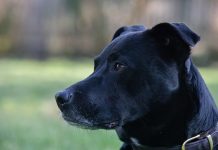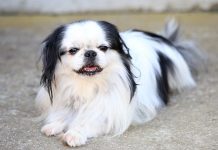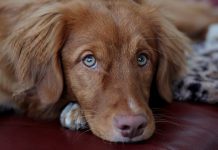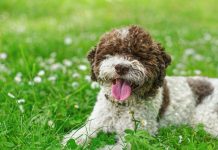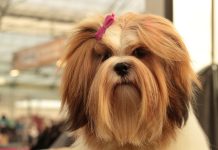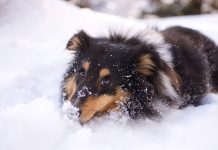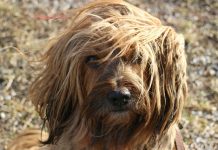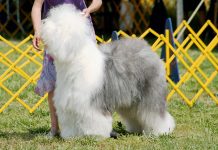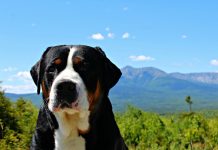History and Origins of the Bolognese Breed
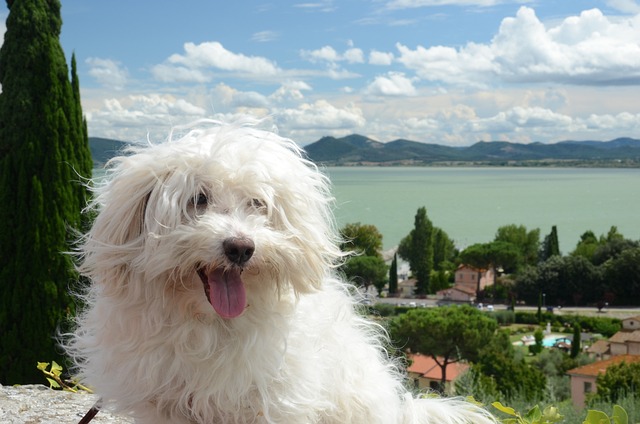
The Bolognese is a small and ancient breed of toy dog originating from the northern Italian city of Bologna. Here’s a brief overview of the history and origins of the Bolognese breed:
- Ancient Roots: The Bolognese breed has ancient origins dating back to at least the Middle Ages in Italy. They were favored by Italian nobility and aristocracy, including the Medici family of Florence.
- Italian Aristocracy: Bolognese dogs were highly prized as companions among the Italian elite and were often given as gifts to royalty and dignitaries.
- Breed Development: The breed’s distinct characteristics, including their fluffy white coat and charming personality, were carefully cultivated over centuries.
- Popularity Decline: By the 19th century, the popularity of the Bolognese began to decline, and the breed became rare. However, dedicated breed enthusiasts worked to preserve and revive the breed’s numbers.
- Modern Recognition: The Bolognese breed was officially recognized by the Fédération Cynologique Internationale (FCI) in 1956 and by the American Kennel Club (AKC) in 2001 under the Toy Group.
Today, the Bolognese remains a beloved companion dog known for their affectionate nature and distinctive appearance.
Physical Characteristics and Appearance of Bolognese Dogs
Bolognese dogs are small, compact, and covered in a distinctive white coat. Here are the key physical characteristics and appearance traits of the Bolognese breed:
- Size: Bolognese dogs are small-sized toy dogs with a square and sturdy build. They typically weigh between 5 to 9 pounds (2 to 4 kg) and stand around 10 to 12 inches (25 to 30 cm) tall at the shoulder.
- Head: They have a slightly rounded skull with a moderate stop and a well-developed muzzle. The expression is gentle and intelligent, with dark, round eyes and black nose and lips.
- Coat: The most notable feature of the Bolognese is their long, fluffy, and pure white coat. The coat is soft, dense, and slightly wavy, giving the dog an elegant and charming appearance.
- Ears: Bolognese dogs have long, hanging ears that are covered in thick fur. The ears frame the face and add to the breed’s endearing look.
- Tail: The tail is typically carried over the back and is plumed with a tuft of fur. It is set high and adds to the overall balance and symmetry of the dog’s appearance.
- Gait: Bolognese dogs have a distinctive, lively gait with good reach and drive. They move gracefully and confidently.
- Overall Appearance: Bolognese dogs are known for their elegant and aristocratic appearance. Despite their small size, they exude a sense of dignity and grace.
- Hypoallergenic Coat: The Bolognese coat is considered hypoallergenic, making them a suitable choice for individuals with allergies. However, regular grooming is required to prevent matting and tangles.
The Bolognese breed’s charming appearance, combined with their affectionate and loyal temperament, makes them wonderful companions for families and individuals alike. Their small size and adaptable nature also make them well-suited for apartment living. Regular grooming and care are essential to keep their coat healthy and beautiful.
Bolognese Temperament and Personality Traits
The Bolognese is known for its delightful temperament and affectionate personality, making them wonderful companions for families and individuals alike. Here are the key temperament and personality traits of the Bolognese breed:
- Affectionate and Loyal:
- Bolognese dogs are devoted and affectionate companions. They form strong bonds with their families and enjoy being close to their owners.
- Gentle and Playful:
- Despite their small size, Bolognese dogs have a playful and gentle demeanor. They enjoy interactive playtime and thrive on companionship.
- Friendly and Sociable:
- Bolognese dogs are generally friendly and sociable with people and other pets. They tend to get along well with children and enjoy being part of family activities.
- Intelligent and Trainable:
- Bolognese dogs are intelligent and eager to please, making them relatively easy to train. Positive reinforcement methods work best with this breed.
- Alert and Watchful:
- While they are not typically guard dogs, Bolognese dogs are alert and will bark to alert their owners of approaching visitors or unfamiliar sounds.
- Adaptable:
- Bolognese dogs are adaptable to various living situations, including apartments and houses. They thrive on human companionship and adapt well to indoor living.
- Moderate Energy Level:
- Bolognese dogs have a moderate energy level. They enjoy daily walks and play sessions but are also content to relax indoors with their families.
- Affectionate Towards Children:
- Bolognese dogs are generally good with children, especially if raised with them from a young age. They are gentle and patient, making them suitable companions for families with kids.
- Companionship Needs:
- Bolognese dogs thrive on companionship and may experience separation anxiety if left alone for long periods. They prefer to be with their families and may follow their owners from room to room.
Training and Socialization Needs for Bolognese Dogs
Proper training and socialization are essential for Bolognese dogs to become well-behaved and well-adjusted companions. Here are some tips for training and socializing your Bolognese:
- Start Early:
- Begin training and socialization as soon as you bring your Bolognese puppy home. Early exposure to different people, places, and experiences will help them develop into confident adults.
- Positive Reinforcement:
- Use positive reinforcement techniques, such as treats, praise, and rewards, to motivate and encourage desired behaviors. Bolognese dogs respond well to gentle and consistent training methods.
- Basic Obedience Training:
- Teach essential commands, such as sit, stay, come, and heel. Practice these commands regularly to reinforce good behavior and improve communication with your dog.
- Socialization with People and Pets:
- Expose your Bolognese puppy to various social situations, including meeting new people and interacting with other dogs and pets. This helps prevent shyness or fearfulness.
- Handling and Grooming:
- Get your Bolognese accustomed to being handled and groomed from a young age. This includes brushing their coat, trimming their nails, and cleaning their ears.
- Consistent Rules and Boundaries:
- Establish consistent rules and boundaries for your Bolognese. Be patient and firm in your training approach to reinforce good behavior and discourage unwanted habits.
- Exercise and Mental Stimulation:
- Provide daily exercise and mental stimulation for your Bolognese to keep them physically and mentally healthy. Interactive toys, puzzle games, and short walks are beneficial.
- Patience and Persistence:
- Bolognese dogs may be sensitive to harsh training methods. Be patient, kind, and persistent in your training efforts to build a strong bond with your dog.
By investing time and effort into training and socialization, you can help your Bolognese become a well-mannered and confident companion. Positive reinforcement, early socialization, and consistent training will contribute to a harmonious relationship and a happy, well-adjusted Bolognese dog.
Health Considerations and Common Issues in Bolognese Dogs
Bolognese dogs are generally healthy and long-lived, but like all breeds, they may be prone to certain health conditions. It’s important for Bolognese owners to be aware of these potential health issues and to work closely with their veterinarians to ensure their dogs receive proper care and monitoring. Common health considerations in Bolognese dogs include:
- Patellar Luxation:
- Patellar luxation is a condition where the kneecap (patella) slips out of its normal position, causing lameness and discomfort. This is a common orthopedic issue in small breeds like the Bolognese.
- Progressive Retinal Atrophy (PRA):
- PRA is a group of genetic diseases that cause degeneration of the retina, leading to vision loss and eventually blindness. Regular eye exams by a veterinary ophthalmologist can help detect PRA early.
- Legg-Calvé-Perthes Disease:
- Legg-Calvé-Perthes disease is a condition that affects the hip joint, leading to degeneration of the femoral head. It can cause pain, lameness, and arthritis in affected dogs.
- Hypothyroidism:
- Hypothyroidism is a hormonal disorder caused by an underactive thyroid gland. Symptoms may include weight gain, lethargy, hair loss, and skin problems. Treatment involves thyroid hormone supplementation.
- Dental Issues:
- Small toy breeds like the Bolognese are prone to dental problems such as dental plaque buildup, gum disease, and tooth loss. Regular dental care, including brushing and professional cleanings, is essential.
- Allergies:
- Bolognese dogs may develop allergies to environmental factors (e.g., pollen, dust) or certain foods. Symptoms can include itching, skin irritation, and digestive issues. Identifying and avoiding allergens is important.
- Heart Conditions:
- Some Bolognese dogs may develop heart murmurs or other cardiac issues. Regular veterinary check-ups can help monitor heart health and detect any abnormalities early.
- Skin Issues:
- Bolognese dogs may be prone to skin problems such as dryness, dermatitis, or fungal infections. Proper grooming and regular skin checks can help prevent and manage these issues.
Living with a Bolognese: Suitable Environments and Lifestyle Considerations
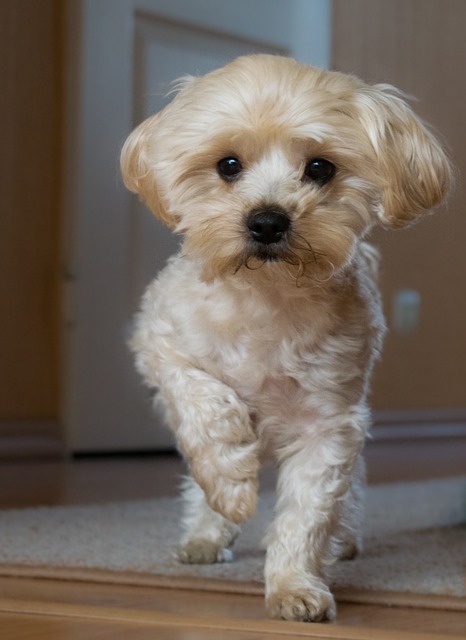
Bolognese dogs are well-suited for indoor living and thrive on human companionship. Here are some considerations for providing a suitable environment and lifestyle for your Bolognese:
- Indoor Living:
- Bolognese dogs are indoor companions and should live inside the home with their families. They are not suited for outdoor living and should not be left outside unattended.
- Climate Control:
- Bolognese dogs have a fluffy coat but are sensitive to extreme temperatures. They should be kept in a comfortable indoor environment, especially during hot or cold weather.
- Regular Exercise:
- Despite their small size, Bolognese dogs benefit from daily exercise to maintain their health and prevent obesity. Short walks, play sessions, and interactive games are sufficient to meet their exercise needs.
- Grooming Routine:
- Bolognese dogs have a long, fluffy coat that requires regular grooming to prevent matting and tangles. Daily brushing, occasional bathing, and regular trimming of the coat are essential.
- Nutritious Diet:
- Provide a balanced and high-quality diet suitable for small breed dogs. Avoid overfeeding to prevent obesity, which can exacerbate joint and health issues.
- Routine Veterinary Care:
- Schedule regular veterinary check-ups, vaccinations, and preventive care for your Bolognese. Early detection and treatment of health issues are crucial for maintaining their well-being.
- Social Interaction:
- Bolognese dogs are social and thrive on companionship. Spend quality time with your dog, engage in interactive play, and provide mental stimulation to prevent boredom and separation anxiety.
- Safety and Supervision:
- Supervise your Bolognese around young children and other pets to prevent accidental injuries due to their small size. Provide a safe and secure environment both indoors and outdoors.
By providing a loving and attentive home environment, regular veterinary care, proper grooming, and a balanced lifestyle, you can ensure that your Bolognese enjoys a happy and healthy life as a cherished family companion. Always consult with your veterinarian for personalized advice and care recommendations based on your Bolognese’s individual needs and health considerations.
Bolognese Variations and Breeding Practices
The Bolognese breed is relatively uniform in appearance and temperament, with breeders aiming to maintain specific standards and qualities. While variations within the breed are minimal compared to some other breeds, responsible breeding practices focus on preserving and enhancing desirable traits. Here’s an overview of Bolognese variations and common breeding practices:
Variations in Bolognese Dogs:
- Coat Texture and Quality:
- Bolognese dogs typically have a long, fluffy, and pure white coat that is soft and silky to the touch. Breeders strive to produce dogs with a well-textured coat that is free from matting and tangles.
- Size:
- The Bolognese is a small toy breed, and variations in size are generally minimal within the breed standard. Breeders aim for consistency in size, with adult Bolognese dogs typically weighing between 5 to 9 pounds (2 to 4 kg).
- Facial Features:
- Bolognese dogs have distinctive facial features, including a slightly rounded skull, dark round eyes, and a well-developed muzzle. Breeders focus on maintaining these breed-specific characteristics.
- Temperament:
- While Bolognese dogs are known for their affectionate and gentle temperament, individual variations in personality may occur. Responsible breeders select for desirable temperament traits, such as friendliness, adaptability, and intelligence.
Breeding Practices for Bolognese Dogs:
- Health Screening:
- Responsible breeders conduct health screenings for genetic disorders common in Bolognese dogs, such as patellar luxation, progressive retinal atrophy (PRA), and Legg-Calvé-Perthes disease. Screening helps ensure that breeding pairs are healthy and free from hereditary diseases.
- Pedigree Evaluation:
- Breeders carefully evaluate the pedigree of potential breeding dogs to assess lineage, genetic diversity, and conformation to breed standards. They aim to select dogs with desirable traits and bloodlines to improve the overall quality of the breed.
- Selective Breeding:
- Breeders engage in selective breeding practices to enhance desirable characteristics such as coat quality, temperament, and health. They strive to produce Bolognese puppies that conform to breed standards and excel as loving companions.
- Ethical Standards:
- Reputable breeders adhere to ethical standards and guidelines set forth by kennel clubs and breed organizations. They prioritize the health and well-being of their dogs and puppies, providing proper care, socialization, and veterinary attention.
- Breeding Goals:
- Breeders may have specific goals for their breeding programs, such as improving coat texture, enhancing temperament, or preserving breed heritage. They tailor breeding practices to achieve these goals while upholding breed standards.
- Continued Education:
- Responsible breeders stay informed about advancements in canine health, genetics, and breeding practices. They participate in breed clubs, workshops, and seminars to continually improve their knowledge and expertise.
- Puppy Placement:
- Ethical breeders carefully screen potential puppy buyers and ensure that their puppies are placed in loving and responsible homes. They provide guidance and support to new owners to ensure the lifelong well-being of their Bolognese puppies.
By supporting responsible breeding practices and choosing reputable breeders, you contribute to the preservation and improvement of the Bolognese breed. When considering adding a Bolognese to your family, seek out breeders who demonstrate a commitment to health, temperament, and breed standards.
50 Best Names with Meanings for Bolognese Dogs
Naming your Bolognese dog is a fun and meaningful part of welcoming them into your family. Here are 50 great names along with their meanings that might suit your Bolognese:
Male Names:
- Cosmo – Means “order” or “beauty.”
- Enzo – Short for Lorenzo, meaning “renowned warrior.”
- Gino – Short for Luigi or Eugenio, meaning “noble.”
- Marco – Italian form of Mark, meaning “warlike” or “dedicated to Mars.”
- Rocco – Means “rest” or “battle cry.”
- Giovanni – Italian form of John, meaning “God is gracious.”
- Dante – Refers to the Italian poet Dante Alighieri.
- Matteo – Italian form of Matthew, meaning “gift of God.”
- Luca – Italian form of Luke, meaning “light” or “bringer of light.”
- Vito – Means “life” or “alive.”
- Orso – Italian for “bear.”
- Piero – Italian form of Peter, meaning “rock” or “stone.”
- Romeo – Refers to the famous romantic character Romeo.
- Sergio – Means “servant” or “attendant.”
- Fabio – Means “bean grower” or “bean farmer.”
- Tito – Short for Titus, meaning “honorable” or “title of honor.”
- Bruno – Means “brown” or “brown-haired.”
- Aldo – Means “old and wise.”
- Nico – Short for Nicholas, meaning “victory of the people.”
- Pablo – Spanish form of Paul, meaning “small” or “humble.”
Female Names:
- Bella – Means “beautiful.”
- Luna – Means “moon.”
- Stella – Means “star.”
- Aria – Means “air” or “melody.”
- Lola – Means “sorrows” or “strong woman.”
- Giulia – Italian form of Julia, meaning “youthful” or “downy.”
- Lucia – Italian form of Lucy, meaning “light.”
- Mia – Means “mine” or “beloved.”
- Sophia – Means “wisdom.”
- Gemma – Means “gem” or “jewel.”
- Alessia – Italian form of Alexis, meaning “defender.”
- Nina – Means “little girl.”
- Lara – Means “protection” or “cheerful.”
- Viola – Means “violet” or “purple.”
- Sofia – Italian form of Sophia, meaning “wisdom.”
- Livia – Means “blue” or “envious.”
- Amalia – Means “work” or “industrious.”
- Elena – Italian form of Helen, meaning “torch” or “bright.”
- Gia – Means “God is gracious.”
- Rosie – Diminutive of Rose, symbolizing love and beauty.
Gender-neutral names:
- Coco – Refers to cocoa or coconut.
- Milo – Means “merciful” or “soldier.”
- Remy – Means “oarsman” or “remedy.”
- Sunny – Symbolizes brightness and happiness.
- Quinn – Means “descendant of Conn” or “counsel.”
- Scout – Refers to someone who gathers information or explores.
- Pippin – Means “lover of horses.”
- Bowie – Inspired by David Bowie, known for creativity and innovation.
- Ollie – Short for Oliver, meaning “olive tree.”
- Roo – Refers to a small kangaroo or joey.
Choose a name that resonates with your Bolognese’s personality, appearance, or the qualities you admire. Whether you prefer a classic Italian name, a meaningful word, or a unique and creative name, the right name will be a perfect fit for your beloved Bolognese companion.
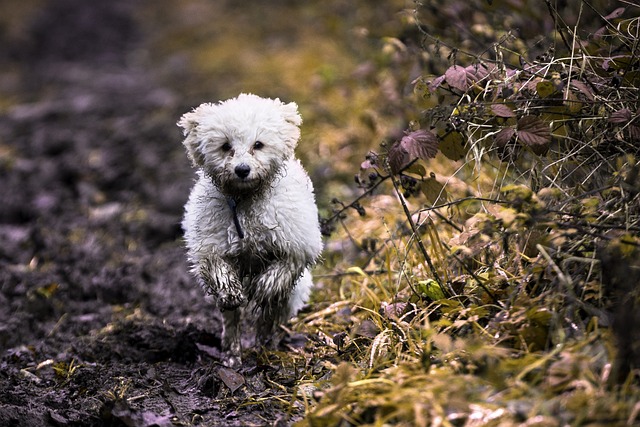
In conclusion, this comprehensive guide to Bolognese dogs has provided a detailed overview of this charming and affectionate breed. Throughout our exploration, we’ve delved into the history, distinctive characteristics, and essential care considerations that define Bolognese dogs. Known for their friendly nature, intelligence, and devotion to their families, Bolognese dogs make excellent companions for individuals and families seeking a loving and loyal pet. They thrive on companionship and enjoy spending time with their human companions. As you embark on your journey with a Bolognese, may you appreciate their unique qualities and form a strong bond with this delightful breed, creating lasting companionship and joy together.







